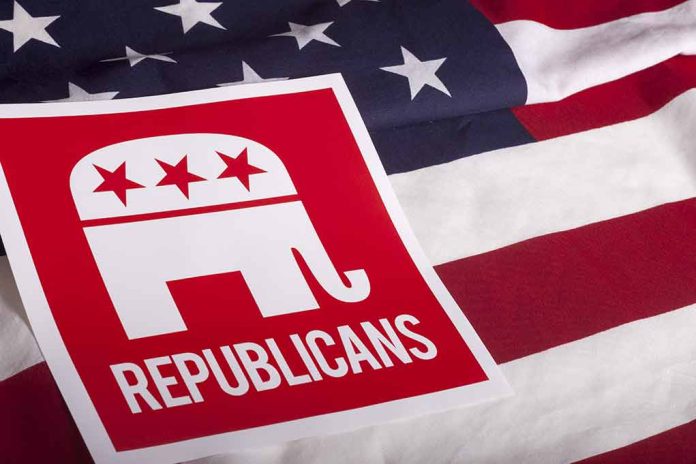
President-elect Donald Trump’s proposal for recess appointments has created ripples within the political arena, questioning the traditional Senate confirmation process.
At a Glance
- Trump urges Senate Republicans to allow recess appointments for swift cabinet confirmations.
- The strategy faces internal GOP division despite the Republican Senate majority.
- Recess appointments bypass Senate approval, a move not employed since a 2014 Supreme Court ruling.
- The competition for GOP Senate leadership is influenced by Trump’s demands.
Trump’s Recess Appointment Strategy
President-elect Donald Trump is pushing Senate Republicans to consider recess appointments, a tactic that would enable him to fill key cabinet positions without the traditional Senate vote. Republicans recently regained control of the Senate, a timely development for such bold political maneuvers. However, Trump’s proposal is not without controversy; it has invited divisions even within the GOP’s ranks.
The importance of swift confirmations is a cornerstone of Trump’s argument, citing delays he experienced during his first term. Trump remarked, “Any Republican Senator seeking the coveted LEADERSHIP position in the United States Senate must agree to Recess Appointments (in the Senate!), without which we will not be able to get people confirmed in a timely manner.”
Any Republican Senator seeking the coveted LEADERSHIP position in the United States Senate must agree to Recess Appointments (in the Senate!), without which we will not be able to get people confirmed in a timely manner. Sometimes the votes can take two years, or more. This is…
— Donald J. Trump (@realDonaldTrump) November 10, 2024
GOP Leadership Race Heats Up
The race to replace Mitch McConnell as Senate GOP Leader has intensified, with Senators John Thune, John Cornyn, and Rick Scott vying for the position. Trump’s lack of endorsement has kept all options open, though he insists the next leader supports his strategy for recess appointments. Scott has publicly stated, “100% agree. I will do whatever it takes to get your nominations through as quickly as possible.”
Cornyn also indicated support for Trump’s approach, declaring Senate Democrats’ resistance unacceptable and warning of extended sessions to expedite confirmations. However, the internal GOP split might challenge the implementation of Trump’s strategy despite backed support from prime contenders.
This is bizarre. Trump has a 3-seat #Senate majority. Cabinet appointments are given deference because they're not LIFETIME appointments.
What Trump is telegraphing is he wants to appoint people offensive to more than just Collins and Murkowski and 1 other.
I mean, Jesus… https://t.co/Zkcd58hazM
— Tripp Whitbeck (@trippwhitbeck) November 11, 2024
Potential Legislative and Political Implications
The potential charting of recess appointments could prompt significant legislative and political reactions. This move bypasses Senate approval, offering temporary appointments during Senate recess. Critics argue it undermines the checks and balances pivotal to U.S. governance, reminiscent of debates before a 2014 Supreme Court decision curbing the president’s appointment power during pro forma sessions.
Trump’s prior administration faced numerous acting secretaries and vacant posts due to delayed confirmations, a scenario he hopes to avoid this term. Success of this strategy could signify a power shift in newly Republican-controlled Congress but not without reignited debates and perhaps increased partisan tensions.
Additionally, recess appointments may lead to disputes between Democrats and Republicans, shaping a turbulent political climate. As all key stakeholders tread carefully, this strategic play, if realized, could redefine administrative appointments and execute prompt governance initiatives.
Sources
1. Trump says Senate GOP leader candidates must agree to recess appointments
2. Trump pressures candidates for Senate GOP leader to fill his Cabinet right away









